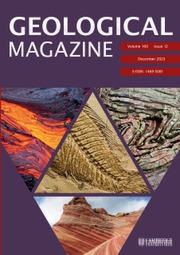Article contents
Middle–late Miocene palaeoenvironments, palynological data and a fossil fish Lagerstätte from the Central Kenya Rift (East Africa)
Published online by Cambridge University Press: 28 December 2015
Abstract
The Miocene epoch was a time of major change in the East African Rift System (EARS) as forest habitats were transformed into grasslands and hominids appeared in the landscape. Here we provide new sedimentological and palynological data on the middle–upper Miocene Ngorora Formation (Tugen Hills, Central Kenya Rift, EARS), together with clay mineral characterizations, mammal finds and a description of the Ngorora fish Lagerstätte. Furthermore, we introduce a revised age of c. 13.3 Ma for the onset of the Ngorora Formation. The older part of the Ngorora Formation (c. 13.3–12 Ma) records low-energy settings of lakes, floodplains and palaeosols, and evidence of analcime indicates that lakes were alkaline. The palynomorph spectrum consists of tree pollen (Juniperus, Podocarpus), Euphorbiaceae pollen (Acalypha, Croton) and herbaceous pollen of Poaceae and Asteraceae, suggestive of wooded grasslands or grassy woodlands. Alkaline lakes, floodplains and palaeosols continue upsection (c. 12–9 Ma), but environmental fluctuations become more dynamic. Paucity of palynomorphs and the presence of an equid may point to progressively drier conditions. A total of about 500 articulated fish fossils were recovered from distinctive layers of almost all sections studied and represent different lineages of the Haplotilapiines (Pseudocrenilabrinae, Cichlidae). Some of the fish kills may be attributable to rapid water acidification and/or asphyxiation by episodic ash falls. Repeated instances of abrupt change in water depth in many sections are more likely to be due to synsedimentary tectonic activity of the Central Kenya Rift than to climatic variation. Overall, the preservation of the Ngorora fish Lagerstätte resulted from the interplay of tectonics, formation of alkaline lakes and explosive volcanism. As records of grasslands that pre-date late Miocene time are rare, our finding of middle Miocene (12–13 Ma) grassy savannah in the Central Kenya Rift is also relevant to models of human evolution in East Africa.
Information
- Type
- Original Articles
- Information
- Copyright
- Copyright © Cambridge University Press 2015
References
- 17
- Cited by

